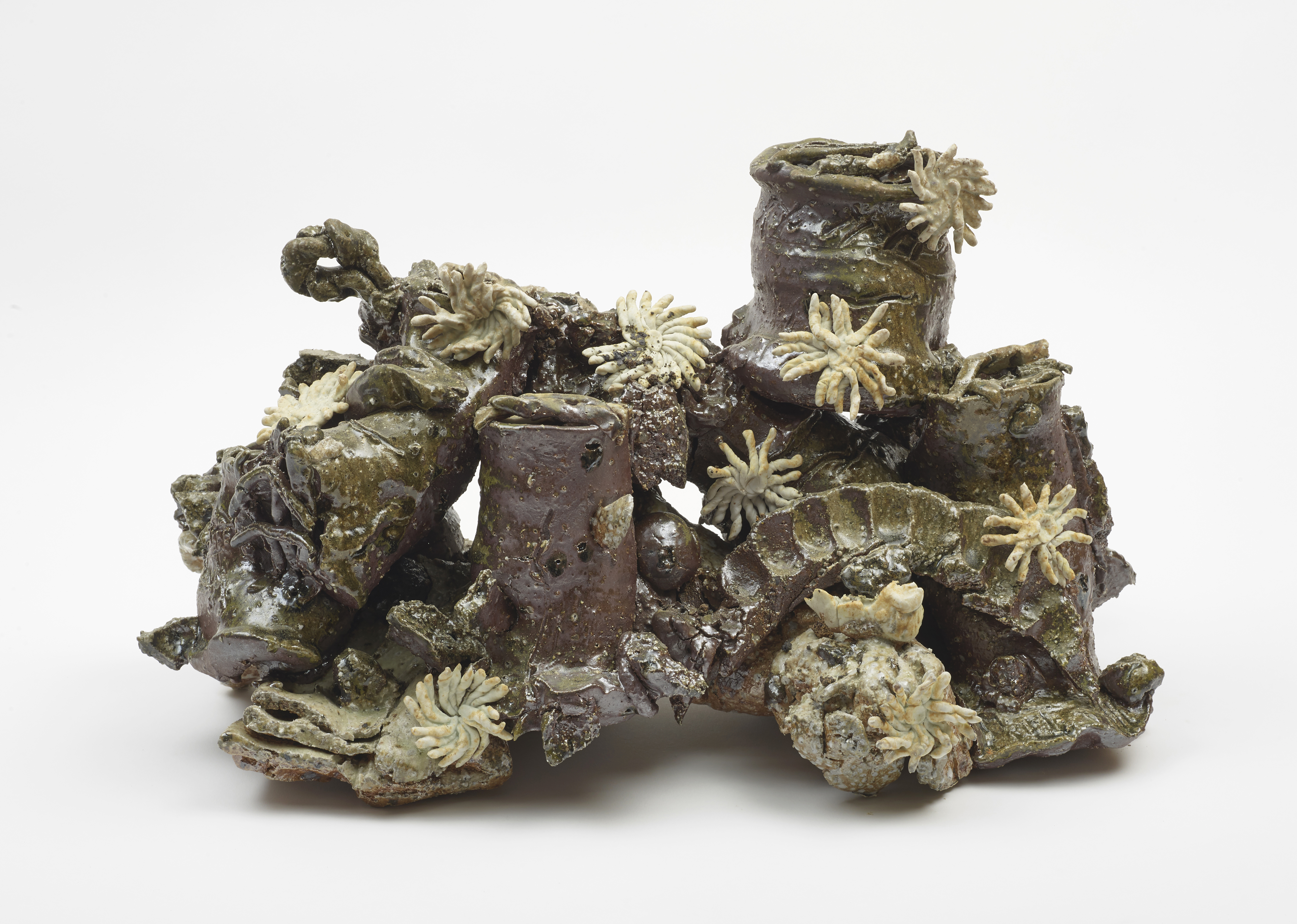Aaron Angell works primarily with ceramics, producing sculptural tableaux of thrown and assembled parts. His work is concerned with non-canonical or ‘folk’ histories and marginal forms of image-making. In 2014 he founded Troy Town Art Pottery in London, the first sculpture-specific ceramic workshop in the UK. Following a residency at the Leach Pottery in St Ives, Cornwall, in 2017, Angell subsequently received a Leach 100 award (celebrating the 100th anniversary of Bernard Leach’s Pottery) to work with anagama (wood-fired, cave-like) kilns.
This piece is one of an on-going series of Caterpillar Engines that Angell has produced since 2018. Its form references an engine block, the structure containing the cylinders and other parts of an internal combustion engine, which has been detached from a larger machine. Its title carries different meanings and dichotomies. It is at once a machine and an animal, a destructive and creative force. The name ‘Caterpillar’ alludes to the American heavy equipment manufacturer (CAT), best known for excavation equipment that both demolishes and builds, as well as the destructive larval stage of butterflies and moths (constructive and often highly decorative pollinators). The work was fired in Oxford University's anagama kiln in Wytham Woods in 2021. The atmospheric glazing, achieved by the build-up of ash within the wood-fired kiln, allows for greater sculptural complexity than could be achieved by a more conventional firing, which would result in some detail being obscured by glaze.
Angell’s innovative approach to ceramics as a vehicle for sculpture makes this piece an important addition to the Shipley Art Gallery’s nationally significant collection of contemporary British craft. When the craft collection began in the late 1970s, the first acquisition was a slab-built ceramic sculpture by Gordon Baldwin (b. 1932). There are now a wide range of sculptural ceramics represented in the collections, including Sometime Fountain (2016) by Nao Matusunaga (b. 1980), which was presented by the Contemporary Art Society in 2017/18. Angell has sought to encourage new ways of thinking about the culturally nuanced history of ceramics, seeing his own work as outside Leachian and post-Leachian traditions of Anglo-Japanese pottery, and this piece will help to open up this dialogue, especially in relation to the outstanding collection of twentieth-century studio ceramics at The Shipley Art Gallery, Gateshead.


